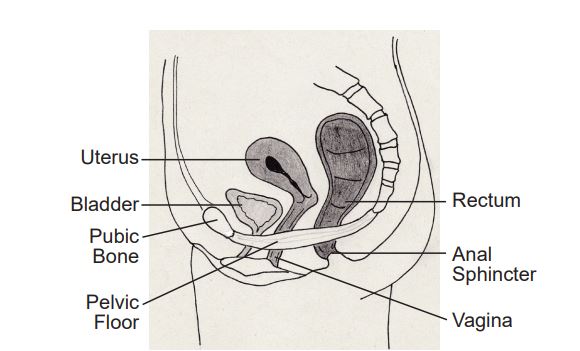Pelvic Floor Exercises for Women
Up to 1/3 of all women in the UK have pelvic floor muscle related problems. They may have difficulty in controlling their bladder or bowels and leak in their underwear. This can happen when they exercise, laugh, cough or sneeze. They may have problems with a prolapse, many people feel embarrassed and upset with these problem and find it interferes with their lives.
What do the Pelvic Floor Muscles do and where are they?
The pelvic floor muscles help to control when you pass urine (wee) and empty your bowels (poo). These muscles should be firm and strong. If they are weak they will not provide the support and control that they should. Pelvic floor muscles are important in posture and work with abdominal muscles to support your spine. The pelvic floor muscles are just inside your body. They are attached between the bottom of your spine (the coccyx or tail bone) and the bone between your legs (pubic bone).
Why do the Pelvic floor muscles not work properly?
The muscles can be damaged in many ways:
- Damage during pregnancy
- After childbirth
- A chronic or smokers cough
- Lack of general fitness
- Changes due to menopause and age
- Too much lifting heavy things
- Being constipated for a long time
- Being overweight
If your pelvic floor muscles are damaged, you may leak in your underwear when you
- Cough
- Laugh
- Blow your nose
- Get up from a chair
- Sneeze
- Exercise
- Lift or bend and stretch
Some people lose control of their bowel and leak faeces (poo) in their underwear. Pelvic floor muscle exercises may help these people too. You may notice a heaviness of a bulge down below - The bladder, womb and bowels usually rest on the pelvic floor muscles. These organs may start to fall down in the pelvis if these muscles are weak. If they push against the walls of the vagina this is called a prolapse.
How should I do pelvic floor muscle exercises?
Choose any comfortable position, with your knees slightly apart. Many people find lying down with their knees bent is a good position to start. Tighten up your back passage as though you are trying to stop passing wind. Then tighten the muscles that you would use to stop yourself passing urine. Do these 2 together and you should be exercising your pelvic floor muscles The feeling is one of “squeeze and lift”. Its easy to use the wrong muscles instead of the pelvic floor muscles.
Don’t:
- Clench your buttocks
- Hold your breath
- Squeeze your legs together.
- Over use your upper abdominal muscles as you may be pushing downwards which is not the correct action.
There are a few ways you can check that you are doing the exercises correctly;
- Put 1 or 2 fingers into your vagina. Squeeze your pelvic floor muscles. You should feel the muscles tighten around your fingers.
- Check with a mirror. Hold a small mirror so you can see the area between your legs. Tighten the muscles. The skin between the anus and vagina should move away from the mirror.
- If you are having sex try to exercise your pelvic floor muscles (e.g you can ask your partner if they can feel your muscles tightening)
It is very important to check you are using the right muscles otherwise there might not be any improvement. You could even cause more damage.
Ask for help if you are not sure that you are using the right muscles. There are specialist physiotherapists and continence advisors who are specially trained and have skills in being able to support you in strengthening your pelvic floor muscles. Pelvic floor muscles work best when you are taught by these experts. When you have learned these exercises you can do them in sitting, lying or standing. You need to do both slow and fast pelvic floor muscle exercises.
Slow exercises
Gradually tighten the muscles and hold. Aim to build up to a maximum of 10 seconds. This helps the muscles provide support for your bladder and bowel.
Fast exercises
Tighten and relax the muscles quickly. This helps the muscle to stop urine leaking when you cough, laugh or exercise.
You are now ready to do a pelvic floor workout.
Look after your Bladder and Bowels
- Have at least 8 drinks a day.
- Don’t have drinks that contain sugar.
- Avoid too many brown drinks such as tea, coffee, chocolate, cola. These have caffeine in them and can irritate the bladder. If you smoke try to stop.
- Try to keep to a normal weight.
- Eat 5 portions of fruit and vegetables a day and avoid getting constipated.
- When you sit on the toilet keep your feet on the floor and relax.
- Never stop and start when you are having a wee on a regular basis.
- Don’t go to the toilet just in case. Only go when your bladder feels full.
Additional information
POGP - Pelvic Obstetrics Gynaecological Physiotherapy www.pogp.org.uk
Bladder and Bowel Community - 7 The Court, Holywell Business Park, Northfield Road, Southam, CV47 0FS Telephone No: (01926) 357220 www.bladderandbowel.org

